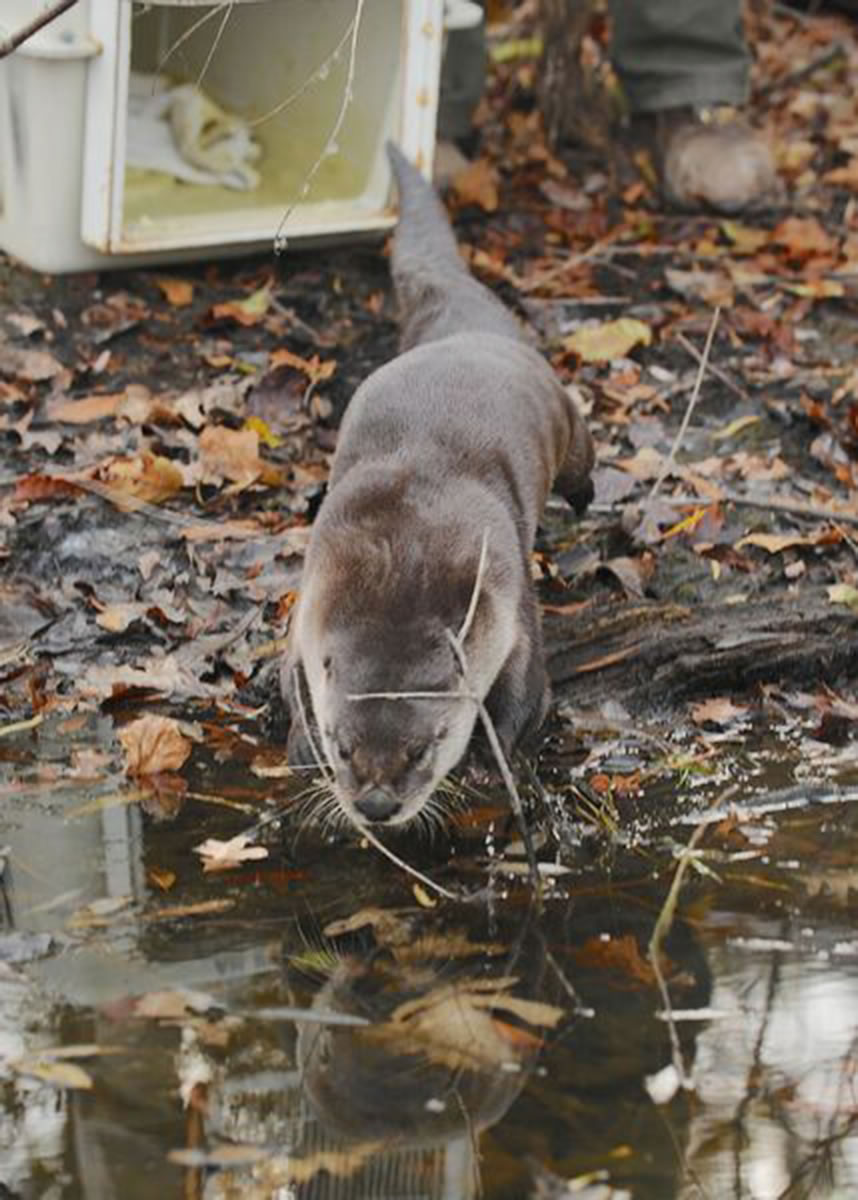CHICAGO — He’s playful, feisty, energetic and fun.
More importantly, he’s back in the forest preserves of south Cook County, Ill., and local scientists have a bead on him.
Recently, wildlife biologists with the Forest Preserves of Cook County captured a 20-pound male North American river otter in an isolated pond in the southwest region of the county.
The catch not only supported evidence that otters have returned to the region after a century of near extinction (in the country and elsewhere across the U.S.), it enabled veterinarians at Brookfield Zoo, who often collaborate with forest preserve scientists, to surgically implant a transmitter with a directional antennae coiled inside the capsule into the animal.
The small device, inserted through a tiny incision, gives biologists the ability to track where the animal is, how far it travels and where it gathers its food, said Michael Adkesson, vice president of clinical medicine for the Chicago Zoological Society, which operates Brookfield Zoo.
“It provides a useful tool to find other otters and can potentially lead biologists to other otter locations to try to get a better understanding of how many there are in the county,” Adkesson said.
“It’s absolutely good news,” he said. “These guys were pretty much eradicated from the state. Population sizes across the whole of North America have really been so heavily depleted. It’s absolutely wonderful to see the recovery they have made. It’s so exciting to have these guys back in the state and extending their range on their own, to have them back up in areas where they haven’t been in a very long time.”
Adkesson said the animal’s presence means it has been able to adjust to the sort of interface between an urban environment and the forest preserves.
“It means the otter has been able to adjust to the amount of change that has taken place in Cook County over the past 200 years,” he said. “It’s amazing to stop and think about how much native wildlife is still present in the county, especially when we think about how urbanized it is.”
Chris Anchor, senior wildlife biologist with Forest Preserves of Cook County, said river otters all but disappeared at the turn of the 20th century.
In an effort to restore them to the region, some were caught in Louisiana during the 1990s and released in the central Midwest area, he said.
“The closest release was about 150 miles south of us,” Anchor said.
Trail cameras, fecal studies and track studies have revealed evidence that otters live in this region today, Anchor said, but until they captured one using a modified foothold trap, one that doesn’t cause any harm, they hadn’t actually seen one.
“I started this job in 1981, and I never thought I’d be handling otters,” he said.
Otters are an apex, or top, predator, he said.
“It’s the equivalent of finding a mountain lion or timber wolf in our environment,” he said. “And it’s an indication that the habitats are stable enough to support an apex predator.”
The data acquired through the transmitter will enable scientists to better understand challenges otters face, as well as offer insight into how they might promote the animal’s population.
Otters, he added, feed on carp, crayfish and muskrat. Though they appear to be playful, they can be aggressive.
Nevertheless, the otter’s return is definitely good news for the local wetland environment, Anchor said.
Although some metrics indicate that things are getting worse for wildlife, mainly the fact that there is less open land and more development, he said, “On the other hand, there has been dramatic improvement with the overall condition of the water.”
He remembers when he was a kid and the only thing a fisherman could find in some reaches of the Des Plaines River was carp, worms and algae.
“Today, were pushing 40 kinds of fish in that same reach,” he said. “It’s now flowing and behaving like a river again.”
Adkesson said the society and the forest preserves group collaborate on many projects involving wildlife, including turtles, birds and fish.
“It’s very rewarding to be involved in conservation programs here in the county. It lets us educate the general population about the conservation issues that are facing wildlife populations — how their everyday decisions in terms of littering and pollution into our waterways can have an impact on some of this wildlife. I think it really resonates with people when you can have an example of a river otter. It helps them understand how decisions on their part can really affect the natural habitat of that animal and how we need to work to protect that habitat.”



